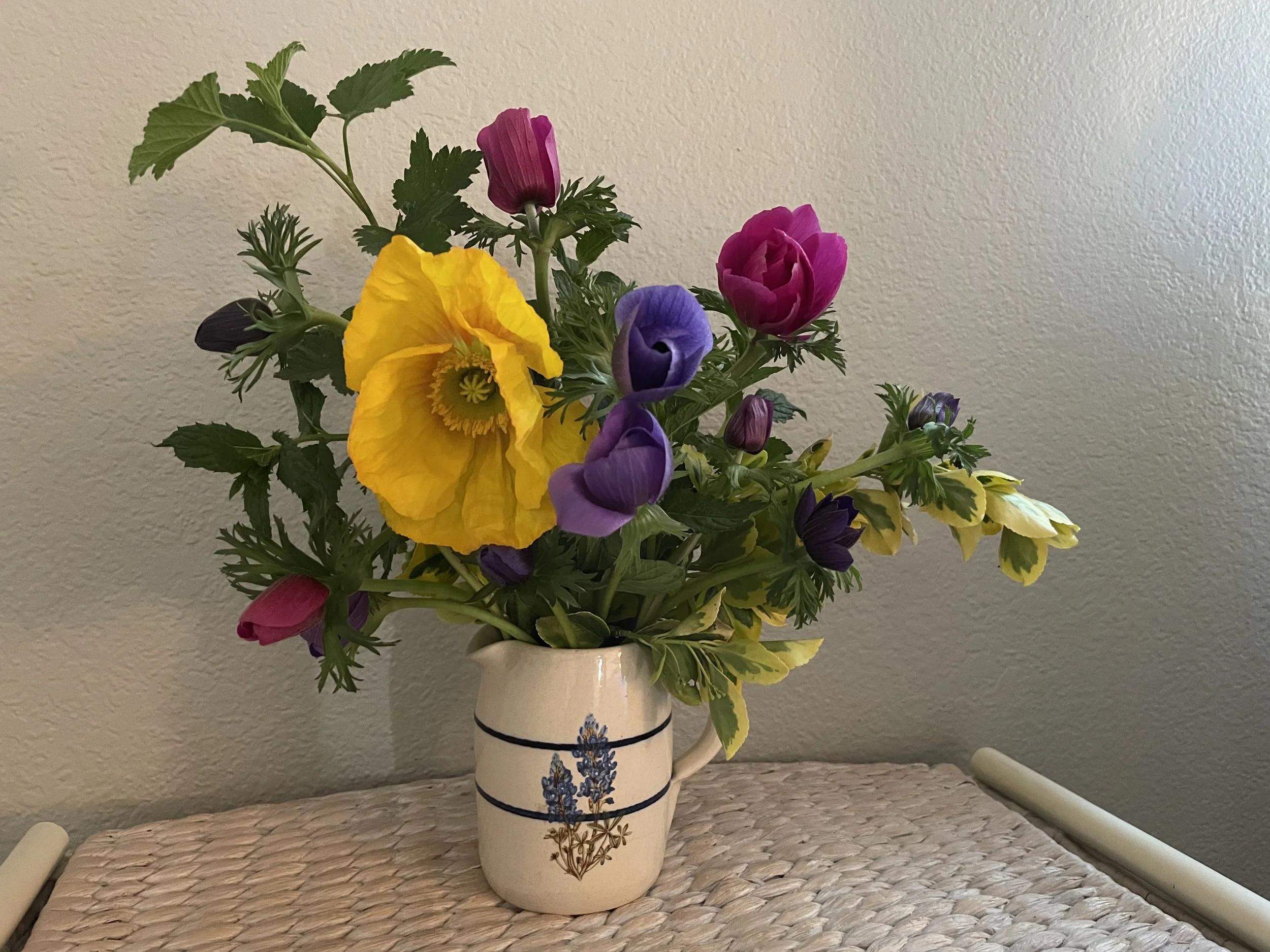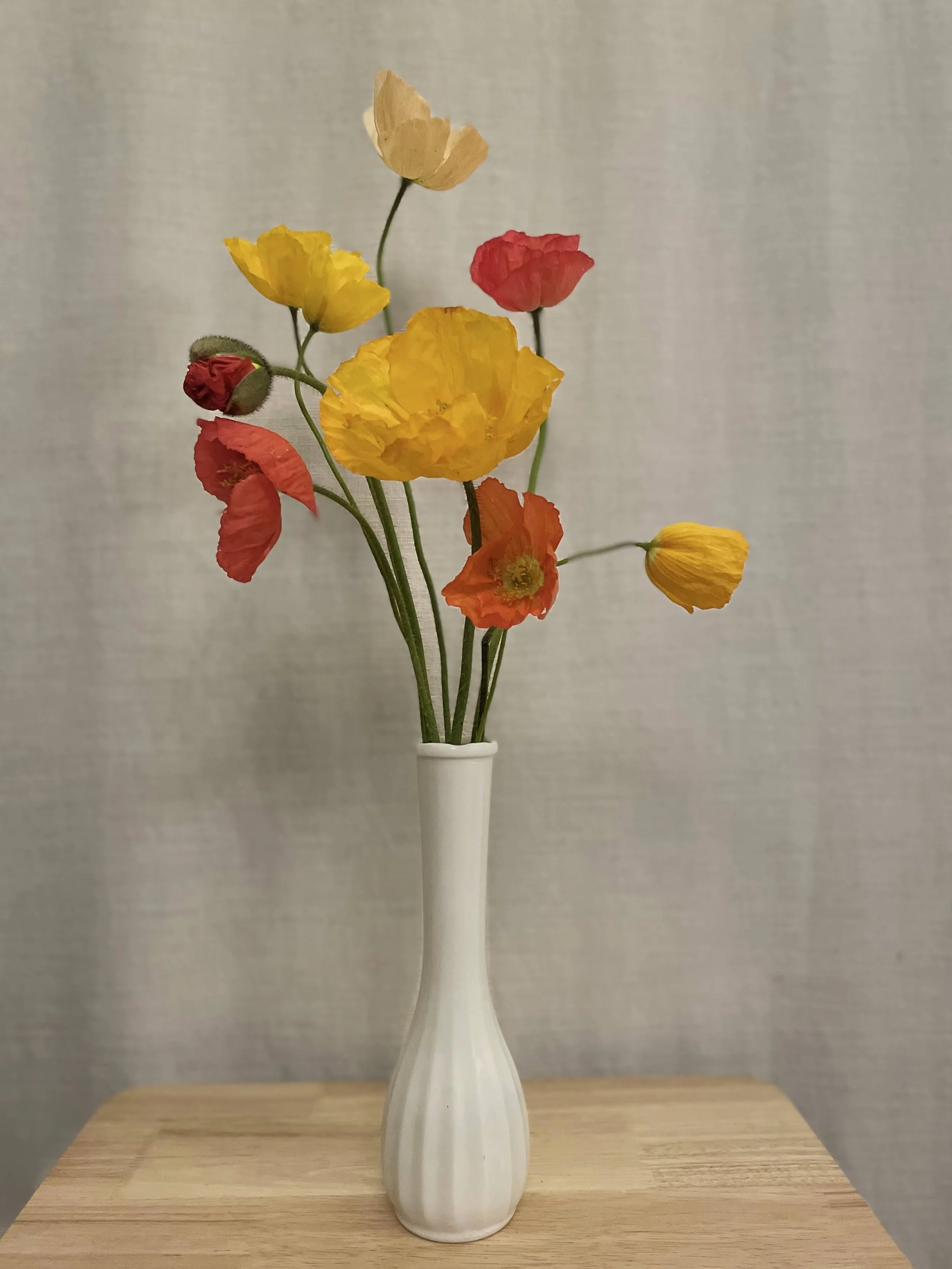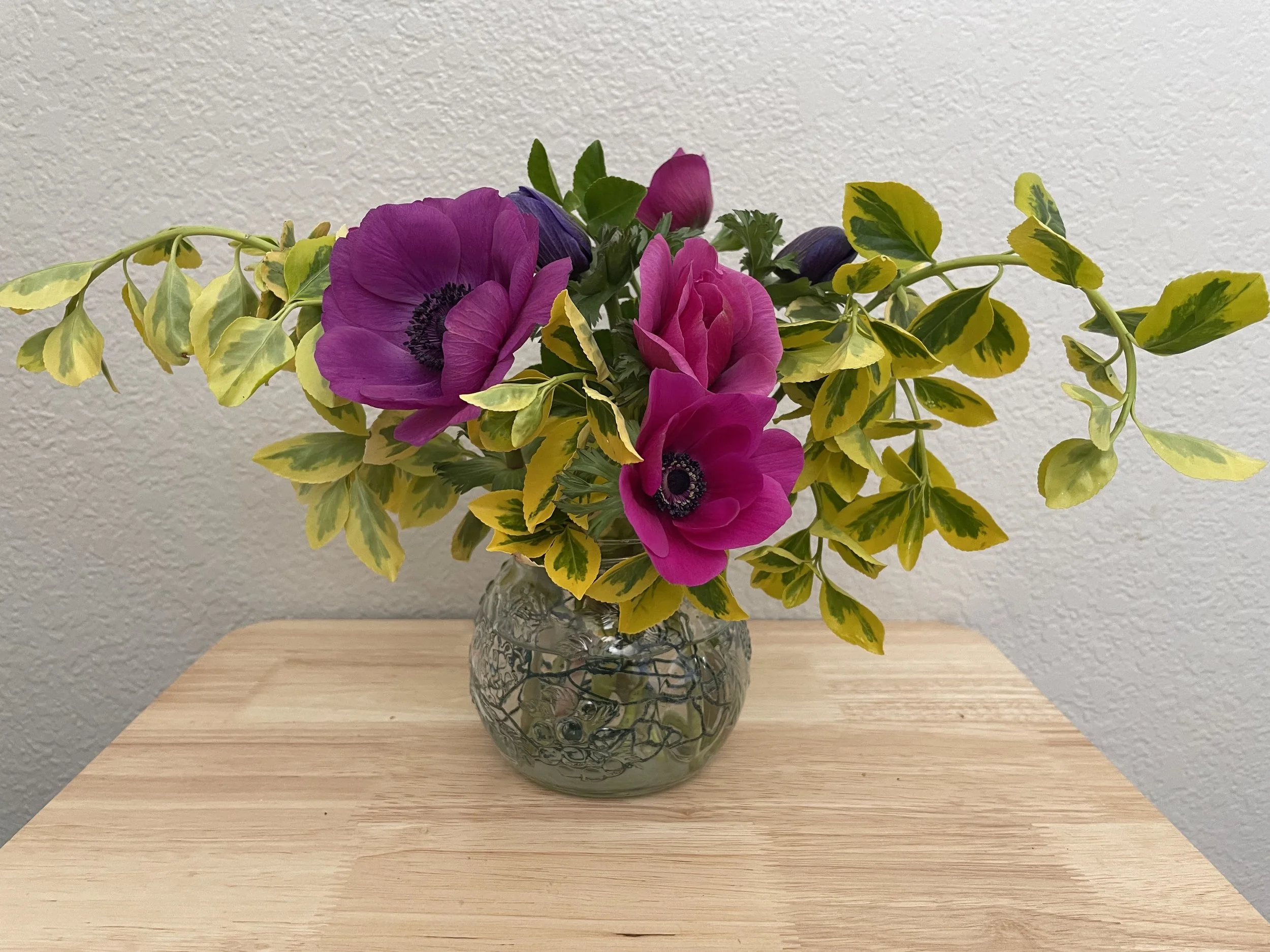Yes You Can Create a Gorgeous Flower Arrangement
Hello flower friend,
Like knitting, woodworking, or other handwork, flower arranging is a centering activity that invites a state of flow, and once you have a few tips to give you a framework, it is so mentally relaxing.
With these tips, you can totally do it! To encourage you, I’ll share some pictures of the arrangements I’ve been doing below. They’re far from perfect, but I enjoyed making them, and I know you can too. It feels good to learn new things as an adult, and since you’re working with flowers, it’s pretty hard to go wrong.
Here are 10 tips for flower arranging, summarized from three beautiful books: Floret Farm’s A Year in Flowers by Erin Benzakein, From Seed to Bloom by Milli Proust, and Life in the Studio by Frances Palmer. These books are all available at the library—unless I checked them out again!
1. Choose a vase that supports stems well and maybe has a narrower opening at the top. A wide mouth mason jar usually is a tricky choice.
2. If you want more support, you can even bend a bit of chicken wire into a little pillow and place it in your container to hold stems in place. Strategically placed woody branches can hold smaller stems too. Floral foam is particularly nasty for our bodies and the environment; try to avoid it if you can.
3. Trim your stems with clean scissors at a 45 degree angle, and make sure no foliage remains under the water.
4. Start with foliage stems, and vary the height of the stems so that the tips form an offset triangle. A nice shape to start with is a tall stem on the left, a slightly shorter stem on the right, and the shortest stem in the front spilling out of the vase. Heart shaped is another nice look.
5. Add in spike shaped stems or more textured foliage next to create movement.
6. Add the large focal flowers, and try some near the edges of the design or near the vase for a less structured look.
7. Fill in gaps with smaller filler flowers.
8. Remember that keeping elements in groups of three (ex. three colors, three focal flowers, three distinct visual points) often makes an arrangement look balanced.
9. Try keeping colors either all warm colors (oranges, reds), or all cool colors (purples, blues). Green foliage can be warm or cool too depending on the shade of green. It’s possible to combine opposite colors without looking jarring, but it’s next level.
10. If you want a natural flowing look as opposed to a tight constructed look, keep some space between flowers. Milli Proust says she tries to leave room for an imaginary butterfly to flit between the blooms.
Other general tips for creativity include setting aside a consistent time and space to practice. This can feel extravagant, but for me it’s simply storing my scissors and vases in a kitchen cabinet, and pulling them out on Sunday afternoons (if I can) for twenty minutes. Another tip I heard is that it’s beneficial to create arrangements in the same vase over and over to really get a sense of what works for that shape.
Below are some of my practice arrangements, and I hope their imperfections (especially of the photography!) encourage you to not overthink it, and just get started!
Your flower farmer,
Meredith





